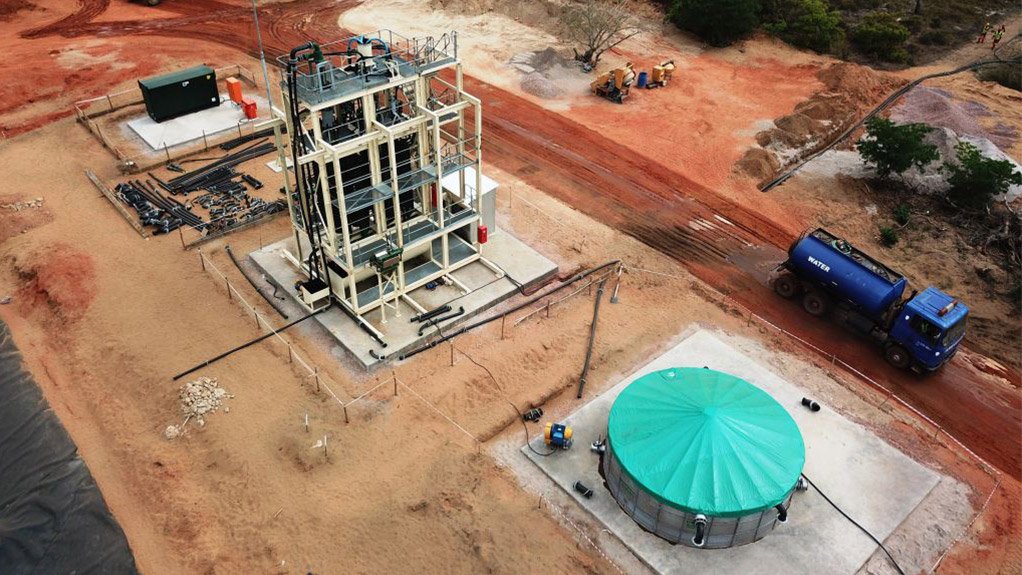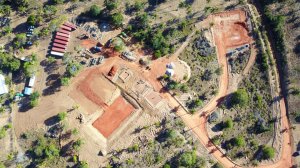Diversified resources company Savannah Resources says it is well on target to complete the prefeasibility study (PFS) for the Mutamba mineral sands project in early 2019, as stage one of the PFS is well advanced and includes a gap analysis, an options review, project planning and budget finalisation for stage two of the PFS. The project is located in the Inhambane province of Mozambique.
The PFS is being managed by mineral sands expert TZMI and it assesses the project’s potential development and the economic aspects, such as the mine cost estimates.
“Further, the PFS will define the commercial potential of Mutamba while resulting in Savannah earning a 35% interest in the Mutamba Consortium.” Savannah Resources is the operator of the Mutamba project.
Mutamba is being developed through a consortium with diversified major Rio Tinto. The companysays a sequenced approach to the PFS has been developed that will ensure that reports and studies build on each other as the PFS unfolds.
“The first of these studies have been identified and preparations are under way for their roll-out. The first set of studies include mining methods analysis and strategic scheduling; tailings design and storage options; a metallurgical testwork programme, the results of which will help inform the engineering design; a port options study; and a hydrology study to update, calibrate and validate the existing models. Further, the collection of 10 t of sample material will aid with final product determination. These studies will inform and lead the remaining work required to complete the PFS,” the company states.
Savannah Resources CEO David Archer reiterates that these are all essential elements that will inform the PFS, with the results guiding the developer in the infrastructure, power, mine planning and process plant requirements.
“It is an exciting time as we see the future mine plan take shape,” he enthuses.
Archer highlights that the company is aiming for first production of ilmenite concentrate in 2020. “One of the advantages of our project is that we will produce titanium feedstocks, which are not recyclable. We have one of the largest untapped reserves, subsequently enabling us to provide ilmenite concentrate and titanium feedstocks for the paint, plastics and paper industries,” he says.
“We believe that our timing means we are well placed to take advantage of the increasing global demand for titanium feedstocks.”
Activity that continues on several fronts in the lead-up to the expected grant of mining licences includes the pilot plant being placed under care and maintenance as planned, while a bulk sample is obtained for processing. The company is collecting samples to determine the final production capacity of the mine.
Savannah Resources expects the Mozambique government to grant the company three mining licences for the Mutamba mineral sands project within the next six months. The company submitted the mining licence application to the Ministry of Mineral Resources and Energy in January.
Mutambahas an initial mine life of 30 years, based on a resource of 451-million tonnes grading 6% total heavy minerals on a conceptual mine plan using 33% of the indicated resource and 67% of the inferred resource. Average yearly production, following ramp-up to a 15-million-tonne- a-year mining rate, has been estimated at 456 000 t of roasted ilmenite and 118 000 t of nonmagnetic concentrate (rutile and zircon).
The project will have an expected final workforce of 332 people, with more than 1 000 indirect jobs expected to be created. The consortium is targeting 95% local participation once operations become established.
“The three mining licences the company applied for cover 417.32 km2 for the Jangamo, Dongane/Ravene and Chilubane deposits, and are actively being considered by the Mozambique mines department,” says Archer.
The deposits are in Inhambane province, with Jangamo comprising 118.08 km2, Dongane/Ravene 161.26 km2 and Chilubane 137.98 km².
Community Development
As part of the Mutamba project, Savannah Resources is also involved in community development programmes in the local districts near the mining area.
The consortium has provided 508 double school desks to schools in the local districts to date, supplied more than 7 000 seedlings for improved and disease-resistant coconut plants, and supports cassava production and appropriate trade skills development. The consortium further provided basic equipment and consumables to local health clinics.
Archer is proud of Savannah Resources being able to provide ongoing village water supply systems – estimated to benefit up to 7 500 people in the provision of clean, potable water – to five of the neediest settlements. “We are pleased to provide the communities with these services because we are providing relief while building lasting community relations,” he concludes.
Edited by: Mia Breytenbach
Creamer Media Deputy Editor: Features
EMAIL THIS ARTICLE SAVE THIS ARTICLE
ARTICLE ENQUIRY
To subscribe email subscriptions@creamermedia.co.za or click here
To advertise email advertising@creamermedia.co.za or click here















